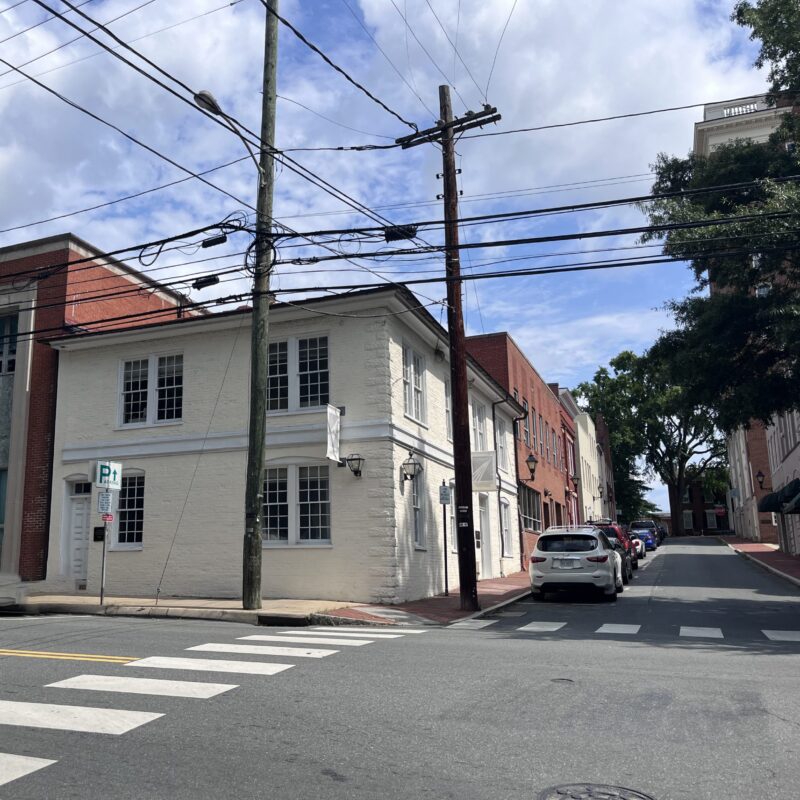"The city wants density, but we want you developers to pay for it." That is the essence of a proposed change cooked up by city staff and presented to the Planning Commission December 11, a last minute addition to a rezoning package that has been in discussion for almost a year. The changes were originally intended simply to lower the by-right height on properties Downtown and increase allowable height on West Main Street. But if the density changes go through, they’ll represent a major scale-back in the city’s 2003 rezoning.
 Protecting the skyline: The city’s considering changes that would scale back the allowable height on the Downtown Mall and scale up the height allowed on West Main Street. |
In 2003, the city altered its zoning to encourage greater density (and therefore encourage mass transit, redevelopment and a more pedestrian-oriented lifestyle), expanding by-right building to up to 87 units per acre in the Downtown area, and 64 units per acre in the West Main area. Changes proposed by Jim Tolbert, director of the city’s Neighborhood Development Services, would decrease by-right density to pre-2003 levels of 43 units per acre in most areas, though developers could still apply for special use permits of up to 200 units per acre.
"The concern we’ve heard expressed is that by allowing so much by-right density, we don’t have the ability to discuss impacts of that density with the developer," said Tolbert. "That if there are impacts on our infrastructure, on sidewalks, whatever, with a high by-right density that we have, we’ve given up the ability to negotiate and discuss those with the developers."
Translation: The city wants proffer money from developers, rather than paying for infrastructure upgrades itself. Plenty of developers in attendance understood that clearly enough.
"I’ve built probably eight, nine buildings Downtown, and I’m probably the one guy that actually successfully sold buildings when the market was high," said Oliver Kuttner, who built The Terraces on the Mall. "I know a little bit about what happens when you create regulations that create the sale of a building subject to special use permit. It’s a good way to shoot deals in the foot.
"If you want cheaper apartments Downtown, don’t restrict the density. A height restriction makes some sense, but other than that, I think you should leave the densities alone. What you’re legislating is apartments with a minimum size of 2,000 square feet. Those are large apartments."
Other businessmen warned that with the slumping housing markets, decreasing the by-right density might exacerbate a growing reluctance to build. Two members of the committee that came up with the new height limits, Kay Slaughter and Brian Hogg, spoke in favor of their recommendations, but pointedly opted not to endorse the density changes.
For the most part, the height changes weren’t publicly opposed. While by-right height on the Downtown Mall would scale back to 70′ from 101′, buildings on the south side of West Main would be allowed to go up to 101′ with a special use permit, up from 80′.
But even 101′ isn’t high enough for some. Architect John Matthews wanted the option by special use permit to go up to 149’—the height of the tallest building in town, the UVA hospital. "The University is planning on spending $1 billion in coming years [around the hospital]. And if we’re looking for growth and density and pedestrians that benefit the entire community along West Main, then why wouldn’t private sector investors and property owners be given the same advantage to present their case to you, and you would base approval based on the merits of their design?"
Tolbert promised to have an informational meeting with developers and property owners in January. At the earliest, the Planning Commission will look at the matter again in February.
Whatever happens, Matthews told the city to give a clear signal soon: "We have investors who are prepared to invest $20 million in a project, and [the uncertainty is] a huge problem for them. I’m just telling you that so you know the other side of the waiting game."
C-VILLE welcomes news tips from readers. Send them to news@c-ville.com.





